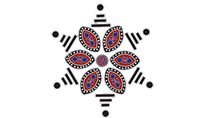1. The basic material is gray or unbleached cotton fabric.
2. To prepare it for printing and dyeing, the cloth goes through various processes:
Soaking, washing and treatment with stem, sodium bicarbonate, castor oil, eruca
sativa oil, camel dung and tamarisk or myrobalan.
3. The fabric is soaked in water which has camel dung immersed in it to make the
fabric soft. This also acts as a bleaching agent as it is an alkaline and helps in the
Printing of the fabric.
4. The first stage of printing includes mud resist which consists of natural gum, lime
and Fullers earth and this produces a white outline on the finished fabric.

